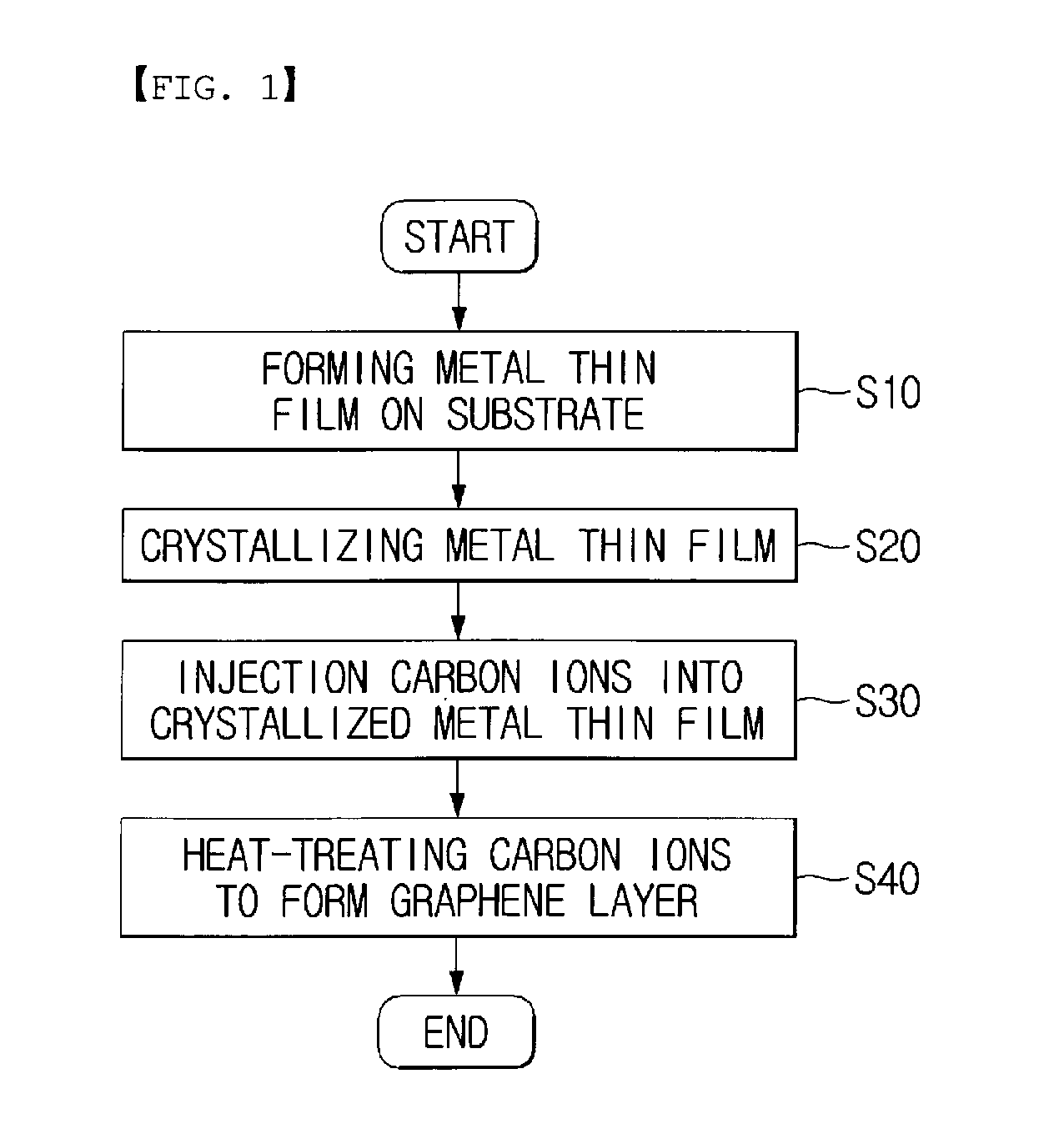Method of forming graphene layer
a graphene layer and graphene technology, applied in the direction of vacuum evaporation coating, crystal growth process, polycrystalline material growth, etc., can solve the problems of difficult to ensure the reproducibility of the formation of a graphene layer, difficult to accurately control the number of carbon atoms dispersed in the metal thin film, and chemical vapor deposition (cvd)
- Summary
- Abstract
- Description
- Claims
- Application Information
AI Technical Summary
Benefits of technology
Problems solved by technology
Method used
Image
Examples
Embodiment Construction
[0027]Hereinafter, preferred embodiments of the present invention will be described in detail with reference to the attached drawings. First, throughout the accompanying drawings, the same reference numerals are used to designate the same or similar components, and redundant descriptions thereof are omitted. Further, in the description of the present invention, when it is determined that the detailed description of the related art would obscure the gist of the present invention, the description thereof will be omitted.
[0028]FIG. 1 is a flowchart showing a method of forming a graphene layer according to an embodiment of the present invention.
[0029]Here, each step of the method of forming a graphene layer according to an embodiment of the present invention may be performed in a reactor.
[0030]As shown in FIG. 1, first, in step 10 (S10), a metal thin film is formed on a substrate.
[0031]In this case, the substrate may be a silicon wafer. The metal thin film may be made of any one selecte...
PUM
| Property | Measurement | Unit |
|---|---|---|
| temperature | aaaaa | aaaaa |
| temperature | aaaaa | aaaaa |
| electron mobility | aaaaa | aaaaa |
Abstract
Description
Claims
Application Information
 Login to View More
Login to View More - R&D
- Intellectual Property
- Life Sciences
- Materials
- Tech Scout
- Unparalleled Data Quality
- Higher Quality Content
- 60% Fewer Hallucinations
Browse by: Latest US Patents, China's latest patents, Technical Efficacy Thesaurus, Application Domain, Technology Topic, Popular Technical Reports.
© 2025 PatSnap. All rights reserved.Legal|Privacy policy|Modern Slavery Act Transparency Statement|Sitemap|About US| Contact US: help@patsnap.com



